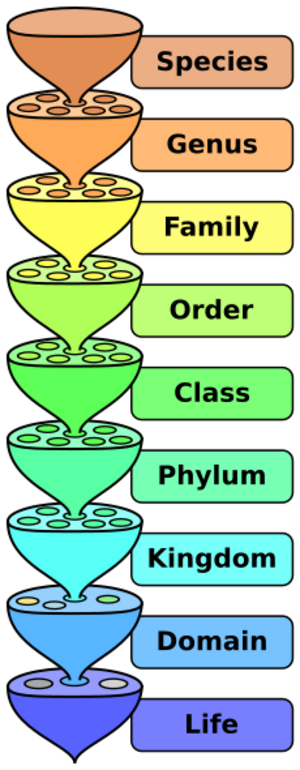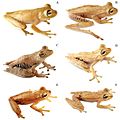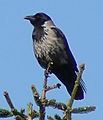Species facts for kids
A species is a group of living things that are very similar and can have babies together. These babies can also have their own babies. Think of it like a special kind of animal or plant. For example, all wolves are one species, and all Humans are another.
Scientists use the idea of a species to help them organize all the different types of life on Earth. It's like putting similar items into the same box. This way of organizing is called biological classification or taxonomy.
It can be tricky to define a species perfectly because nature is full of surprises! But generally, if two animals can mate and have fertile offspring (babies that can also have babies), they are considered the same species.
Scientists group living things into different levels, like a set of nested boxes. The species is the smallest main box. Here's how it works, from biggest to smallest:
- Kingdom: This is the largest group, like the animal kingdom or plant kingdom.
- Phylum: A big group within a kingdom, like all animals with backbones (vertebrates).
- Class: A smaller group, like all birds.
- Order: Even smaller, like all songbirds.
- Family: A group of closely related genera, like the crow family (which includes crows, ravens, jays, and magpies).
- Genus: A group of very similar species, like crows and ravens.
- Species: The most specific group, like a crow.
To help remember this order, you can use a fun phrase: "King Phillip Came Over For Great Spaghetti." Each first letter stands for a level: Kingdom, Phylum, Class, Order, Family, Genus, Species.
Contents
Example: The Common Loon
Let's look at how a bird like the Common Loon fits into these groups:
- Kingdom: Animalia (It's an animal!)
- Phylum: Chordata (It has a backbone.)
- Class: Aves (It's a bird.)
- Order: Gaviiformes (It's a type of diving bird.)
- Family: Gaviidae (It belongs to the loon family.)
- Genus: Gavia (It's a type of loon.)
- Species: Gavia immer (This is its unique scientific name.)
- Common name: Common Loon or Great Northern Diver.
Understanding Species Over Time
For a long time, people argued about whether species are truly separate things in nature or just labels we create. Some thought species were clearly different because they look alike and only breed with their own kind.
But there are many exceptions!
- Sometimes, species gradually change into other species across different areas. They might even breed where their populations overlap. This is like a "ring species" where the ends of the ring can't breed, but they can breed with their neighbors around the ring.
- Other times, two groups of animals might look exactly the same but cannot breed together. These are called "sibling species." Scientists often need to look at their DNA to tell them apart. This shows that looks can be deceiving!
Scientists who study fossils (palaeontologists) have a harder time. They can only use the visible features of a fossil, which is just a small part of what makes a living species unique. They can't see if they bred together.
A big change in how we think about species came from Charles Darwin. His idea of evolution showed that living things change over time, meaning there aren't always clear, unmoving lines between species.
Later, a scientist named Ernst Mayr suggested the "biological species concept." He said that a species is mainly a group of living things that can breed together in nature. He believed that new species form when groups become separated, often by geography (like a mountain range or ocean), and then they evolve differently until they can no longer breed with each other.
Related pages
Images for kids
-
All adult Eurasian blue tits share the same coloration, making them easy to identify as one species.
-
A part of a gene called cytochrome c oxidase is used to tell species apart in a special database.
-
A cougar, mountain lion, panther, or puma are all common names for the same species: Puma concolor.
-
This is the first example (holotype) of Lacerta plica, described by Carl Linnaeus in 1758.
-
Ernst Mayr suggested that species are groups that cannot breed with other groups.
-
Palaeontologists use visible features of fossils like these Inoceramus shells to decide if they are different species.
-
John Ray believed that species always produce their own kind and don't change much.
-
Carl Linnaeus created the two-part naming system for species.
-
The Hypsiboas calcaratus–fasciatus group contains at least six species of treefrog that look very similar.
-
A hybrid crow with a dark belly and dark gray neck.
-
Another hybrid crow with a dark belly.
-
These are two types of gulls, a herring gull (Larus argentatus) and a lesser black-backed gull (Larus fuscus), from different ends of a "ring species."
-
A greenish warbler, Phylloscopus trochiloides.
See also
 In Spanish: Especie para niños
In Spanish: Especie para niños


















